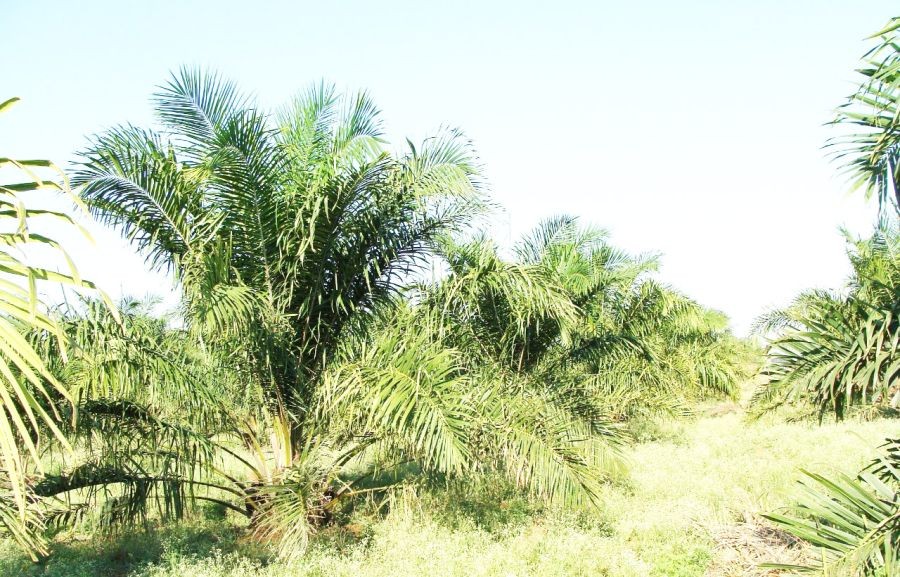Representative Image: While oil palm plantation is increasing in Nagaland, experts and activists have express apprehension over its adverse impact on biodiversity and environment. (Image by Bishnu Sarangi from Pixabay)

Moa Jamir
Dimapur | August 31
Oil palm plantation area in Nagaland has increased from 140 hectares (ha) in 2015-16 to 4,623 ha as of March 31, 2021. As per the Department of Agriculture (DoA) document, the State Government has further set a target of 15,000 ha for its cultivation.
With the approval by the Union Cabinet approval for the implementation of a new Centrally Sponsored Scheme (CSS) called the National Mission on Edible Oils – Oil Palm (NMEO-OP), with special focus on the North East and the Andaman region on August 18, the area may increase further.
In the conclusion of a two-part series, The Morung Express looks at the sustainability of monoculture/ oil palm plantation as well as some forward in the environment versus economic development debate.
Recipe for disaster?
After the announcement by the Union Cabinet, the Member of Parliament from Tura Agatha Sangma wrote a letter to the Prime Minister expressing serious concerns over “the unilateral imposition” of the NMEO-OP programme.
The letter, dated August 21, among others, expressed apprehension that introduction of the “foreign species” in the region would create irreparable ecological imbalance, distort the ground water table and “wreak havoc on the social fabric” in the pre-dominantly tribal community-based society.
Expert panels this newspaper consulted more or less concurred with Sangma and questioned the renewed push of monoculture and its sustainability.
“Large-scale mono-cropping cannot and will not be sustainable for Nagaland’s already vulnerable biodiversity. Clearing large areas of forests and growing the same type of crop/plant will annihilate the remaining diverse species of flora and fauna, that too as identified by the world are endemic and found nowhere in the planet,” asserted Abokali Jimomi, who promotes local products, organic and sustainable farming.
“Nutrient loss due to growing only one type of crop is inevitable; degradation of soil due to overuse of and dependency on chemicals will harm the soil, ground water and diversity around our ecosystems,” she added.
Putting things into perspective, Professor Tongpang Longkumer of Nagaland University’s School of Agricultural Science and Rural Development (SASRD) said that traditional shifting (jhum) cultivation, which was invariably a type of multiple cropping system, meets the farmers’ subsistence needs for food, fodder and fibre requirements.
“However; commercializing this form of agriculture could not be done. Eventually, many farmers took to mono cropping of some crops such as rubber, arecanut, pineapple etc. on semi-commercial and commercial scale,” he informed.
The professor, however, cautioned that despite “good economic returns” monoculture has various deleterious effects including loss of soil nutrients, groundwater pollution, increase use of harmful chemicals, proliferation of pest and diseases and adverse altering the natural ecosystem.
Policy Analyst and Development Advisor, Amba Jamir was direct in highlighting the adverse impact of oil palm plantation, and by extension, its unsustainability.
“We have witnessed the terrible impacts of oil palm plantations in Malaysia and Indonesia. The loss of large tracts of forests to accommodate its plantation, the environmental disturbances brought about by the deforestation (both in terms of flora, fauna and also water resources) and the larger socio-economic impacts that the traditional communities had to face is there for us all to see,” he pointed out.
Both M Lokeswara Rao, former Principal Chief Conservator of Forests & Head of Forest Force, Nagaland and Abokali shared similar concerns.
“If mono-cropping is the answer to profit-making and wealth-creation… we must also ask at whose/what expense, and what cost,” stated Abokali. “Which individuals and communities exactly will benefit, what benefits are those as weighed against the risks, who defines and what is the measuring scale for what ‘better life’ is for us indigenous people?”
The Way Forward: Reflect
“We don’t see any existence about the implementation of ‘access and benefit sharing’ (Nagoya Protocol) of which the GOI is a signatory,” maintained Dr Martemjen. The Protocol, signed in 2010, provides a transparent legal framework for the effective implementation of “the fair and equitable sharing of benefits arising out of the utilization of genetic resources,” one of the objectives of the Convention on Biological Diversity.
Citing the Supreme Court order for “phasing out all exotic plantation to conserve” in Andaman And Nicobar Islands in 2002, Rao said that with “caution” oil palm plantation can be introduced on foothills in wastelands and degraded areas on experiment basis so that the remaining forest areas and CCA (Community Conservation Areas) are not touched.
“There should be panel of experts to debate the pros and cons before introduction of (large scale) palm oil plantation,” he added.
For Dr Martemjen, both economic and environment problems are result of human greed and this cannot be addressed by any human ideology, policy or strategy but by “transformation one’s heart, attitude and belief alone.”
He further called for efforts to promote indigenous seeds, plants etc. “We have developed a concept that everything that is foreign is good and as such, we have let foreign culture completely dominate ours in every aspect not realising our immense potential.”
The indigenous and human rights activist also “sincerely hope to be wrong” but pointed out that in Nagaland “everything the government touches turns to ashes,” such as Tuli Paper Mill, Sugar Mill, Ganeshnagar Industrial area etc.
“So the State Government needs to seriously do some soul searching before implementing any project.”
Why target these regions? Oil Palm plantations require large tracts of forests and so there is no doubt that if introduced, the plantations will keep increasing (just like tea gardens) and slowly, only those with large tracts of land will benefit, Amba posed.
“I sincerely hope that people, and hopefully the state governments, will not be blinded by the money available for this scheme but be prudent in their decisions as what we do today will greatly impact our future generations,” he added.
“Our farmers are rich in ecological knowledge systems, seed management and resource management at landscape levels. We must recognise these qualities and strengths that we have and capitalise on them through innovative programmes, activities and schemes rather that just doing everything that is designed and planned in Delhi.”
Sustainability per se in terms of environmental health, economic profitability, and social and economic equity in these plantations, Prof Tongpang noted, can only be achieved through proper planning, research and extension to create awareness and accountability. “It is the responsibility of all participants in the system, including farmers, laborers, policymakers, researchers, retailers, and consumers -each has its own part and unique contribution.”
On development versus environment debate, he added: “Efforts should be made to utilize the available resources in a sustainable manner with technologies that harmonize well with the traditional systems and values to provide psychological, environment and economic security and flexibility in future land use.”
In any project prior informed consent should be done and access and benefit sharing must be addressed along with environmental impact assessment while bottom up approach should be given due consideration, Dr Martemjen added. “Perhaps it’s time to think local and act global.”
This is the second and last of the two-part series.
Read Related Reports:
Nagaland tryst with oil palm plantation - I: Tread cautiously, experts mindful of impact
Oil Palm Plantation in Nagaland: From 140 to 4623 ha in 6 years






